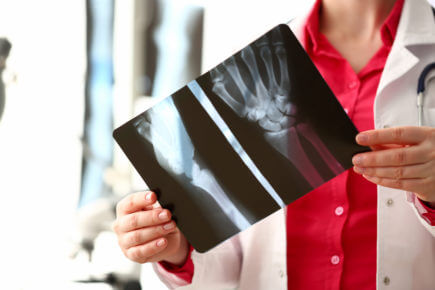 You might have gone to the hospital because of a sports injury or a slip-and-fall accident, and the doctors performed an X-ray to help diagnose your injury. You might have also had an X-ray because of a bad cough that caused concern.
You might have gone to the hospital because of a sports injury or a slip-and-fall accident, and the doctors performed an X-ray to help diagnose your injury. You might have also had an X-ray because of a bad cough that caused concern.
We are no strangers to medical X-rays. That is because this technology is imperative in the diagnosis and subsequent treatment of so many different illnesses and injuries.
X-rays were discovered in 1895 by German physicist Wilhelm Rontgen, and medical imaging is only the most well-known of its many applications. Medical X-rays use electromagnetic radiation, and it is the most common imaging technique because of its speed, noninvasive methodology, and relatively low cost.
Unlike the light rays we see, X-rays are not visible. X-rays can pass through solid objects, including the human body. They effortlessly go through flesh, tissues, and bones without being felt by patients.
What Are the Uses of Medical X-Rays?
Let’s take a look at some of the many things that medical X-rays can find:
Bone Fractures
After a patient suffers an incident or an accident, the doctor may determine that an X-ray is required due to a suspected broken bone. If the X-ray results do not present clear findings, the doctor may order further imaging tests like a CT scan.
Bone Loss or Osteoporosis
As we get older, the calcium levels in our bones tend to diminish – and the bones become brittle. An X-ray can identify which parts of a bone are the weakest and need attention. It can also detect the severity of the bone loss.
Arthritis
X-rays also have the power to capture images of our connective and supportive tissues in a joint. When these tissues are degraded, it causes arthritis. Moreover, the guidance of fluoroscopy is useful for steroid injections when a doctor is treating arthritis via minimally invasive treatment.
Infections
With a chest X-ray, your doctor can take a look at your airways quickly and noninvasively. The X-ray can detect and display any fluid in your lungs. This enables your doctor to identify infections like pneumonia and determine the proper treatment.
Heart and Blood Vessel Problems
X-rays can also detect heart problems like congestive heart failure. Chest X-rays can show changes in the size and shape of your heart. Also, doctors may use X-ray-guided fluoroscopy for procedures like angioplasty.
Tumors
An X-ray can help in identifying a tumor. The scan will show a lump or mass of tissue forming. If a mass is identified, follow-up scans such as an MRI or CT scan will also be ordered to further determine the nature of the mass.
Carrus Health in Sherman, Texas
With the help of X-ray technology, your doctor can often determine a diagnosis and decide on the proper treatment. Our experienced medical professionals at Carrus Health are here to assess your condition as quickly as possible, so you can get on the road to recovery and wellness from your illness or injury.
If you would like to schedule an appointment with one of our trusted doctors, contact us today by calling us at (903) 870-2600. You can also fill out our online contact form to get in touch with us. We look forward to seeing you!
